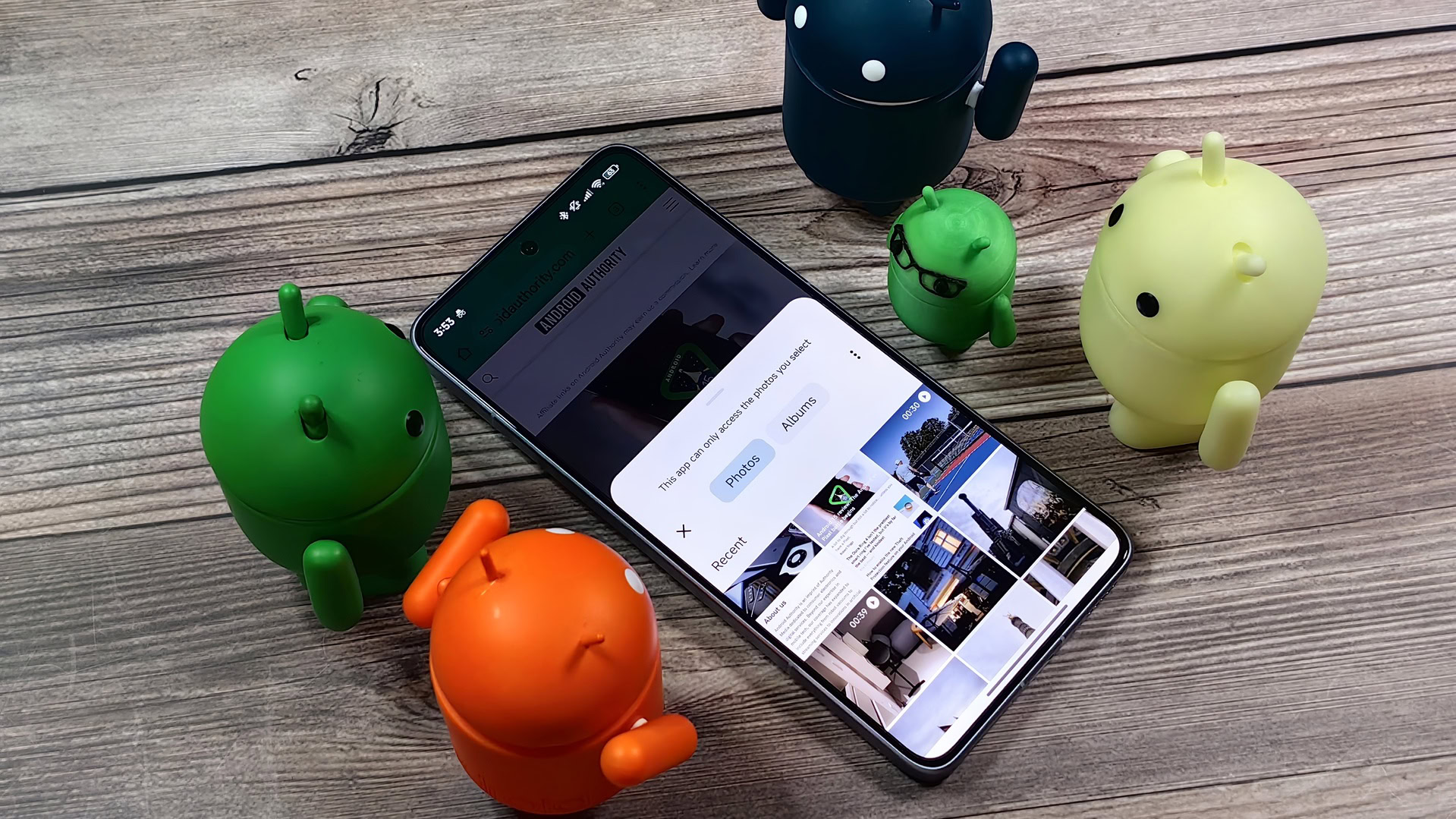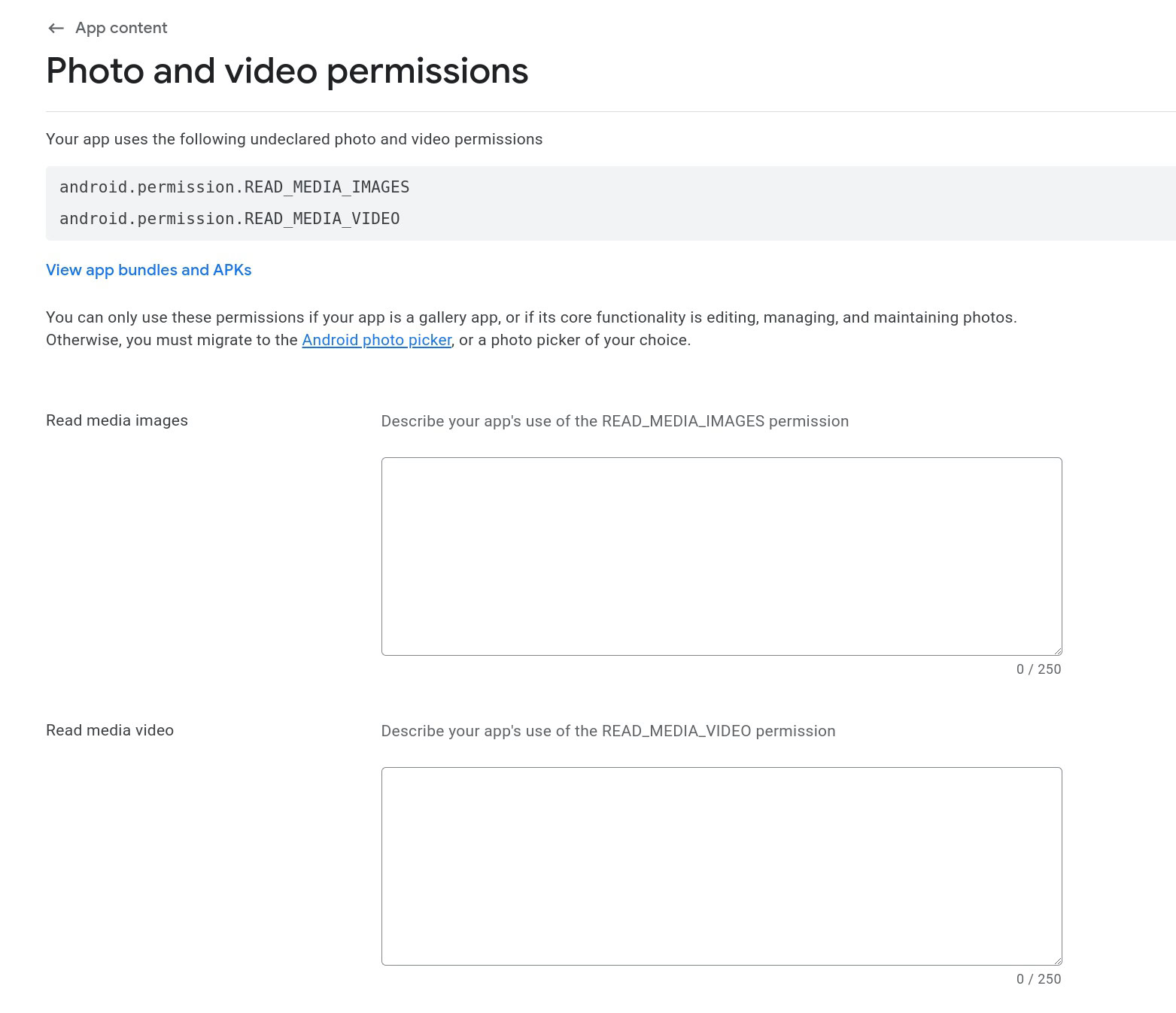Affiliate links on Android Authority may earn us a commission. Learn more.
Google Play will force many apps to use Android’s Photo Picker for better privacy
Published onOctober 18, 2024

- Google Play is reaching out to many developers to tell them they need to adopt the privacy-preserving Android Photo Picker.
- Specifically, Google is contacting developers of Android apps that request broad access to photos and videos.
- Google is giving developers until the end of the month to explain why they need broad access to photos and videos or to switch to the Android Photo Picker.
The photos and videos you store on your Android device can reveal a lot about you, which is why it’s really important to carefully choose what apps can access them. The best Android apps don’t request access to your phone’s entire media gallery unless they really need it, but many apps, unfortunately, request broad access to photos and videos when they don’t really need to. Google has been trying to crack down on this issue by offering developers alternative, privacy-preserving methods to access photos and videos, but it’s so far been unsuccessful at getting developers to use them. Soon, though, many app developers will be forced to use Google’s privacy-preserving photo and video picker.
With the launch of Android 13 in 2022, Google introduced the Photo Picker API, a privacy-preserving method for apps to access your photos and videos. By using the Photo Picker API, apps can request access to the photos or videos of your choosing without needing to request permission to access your entire media gallery. It’s intended for apps that have a one-time or infrequent need to access some photos or videos.
The Photo Picker is essentially a purpose-built version of the system file picker that has been around since Android 4.4 was released in 2013. While the system file picker offers a privacy-preserving way for apps to access any file on your device, the Photo Picker only provides access to photos and videos. Google gave the Photo Picker a UI that’s more fitting for selecting photos and videos, complete with larger previews and tabs to switch between all items and albums.
After its introduction, though, Google really struggled to get developers to adopt it. The vast majority of Android apps either continued to use the old system file picker or their own self-developed picker, the latter of which requires broad access to photos and videos. Google tried to move the needle by enhancing the Photo Picker through updates that made it compatible with versions of Android as far back as 4.4, made it take over the system file picker’s job when apps wanted to select photos or videos, and made it able to select media from Google Photos. However, these changes were still not enough to convince many developers to adopt the Photo Picker, so Google is employing its most effective means to force adoption: making a new Google Play Store policy.
Last October, Google announced that it would eventually crack down on apps that “unnecessarily request the READ_MEDIA_IMAGES and/or READ_MEDIA_VIDEO permissions (on Android 13+) to access the user’s images and/or videos.” This crackdown would initially begin in “mid-2024” with a “request” for apps that only have a one-time or infrequent need to access images and/or videos to remove the READ_MEDIA_IMAGES and/or READ_MEDIA_VIDEO permissions. Beginning in “early 2025,” though, “only apps with core functionality relying on accessing the user’s image and/or videos” would be allowed to use the READ_MEDIA_IMAGES and READ_MEDIA_VIDEO permissions.
At Google I/O earlier this year, the company announced that it would start enforcing this policy in August, but it seems it actually began its crackdown towards the end of last month. On the support page for Google Play’s Photo and Video Permissions policy, Google says it began prompting developers on September 18 to “either submit a declaration form to qualify for core use/broad access or remove permissions (if one time/infrequent use case.)” Developers have until the end of this month to submit declaration forms, and those who fail to do so will be blocked from updating their app on Google Play. Google is giving developers the chance to request a stay on enforcement until January 22, 2025, but after that date, the company will enforce this policy on all developers.
Developer Tolriq shared a screenshot of this declaration form on Reddit last month, which states that the only apps that can request the READ_MEDIA_IMAGES and READ_MEDIA_VIDEO permissions are gallery apps or apps that center around editing, managing, and maintaining photos/videos. Google’s support page also mentions that “apps that are in the social, communication, photo/video editor categories and others that can demonstrate broad access needs like photo editors, user-generated content platforms, image search features, QR code scanners, and similar” can apply to keep these permissions. However, these apps must demonstrate a “core use case that requires persistent or frequent photo/video access,” simply having a custom photo picking experience does not qualify.
In any case, this new policy heavily restricts the number of apps that can request these two permissions, giving many existing apps no choice but to migrate over to either the system file picker or the Android Photo Picker. While this forced migration is undoubtedly a win for privacy, it’ll be a downgrade in functionality for some apps, as the Android Photo Picker still lacks many features. For example, the Android Photo Picker still doesn’t have a search function, though Google said this is in the works. It also doesn’t display local albums created by Android apps, forcing you to scroll through the “Photos” or “Videos” tab to find them. Finally, it also doesn’t have any filtering or sorting options, the ability to select an album or a way to quickly select many items.
Hopefully, Google will address these issues in future updates to the Android Photo Picker, especially since it’s going to force the feature on apps.
